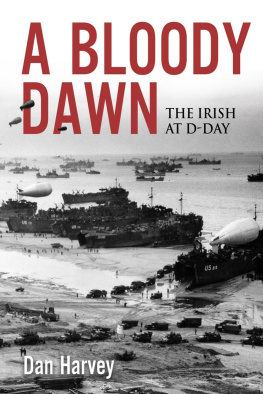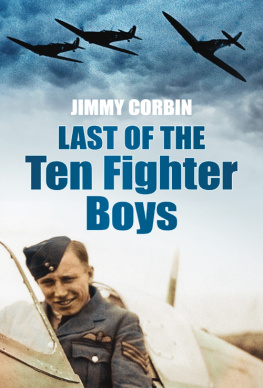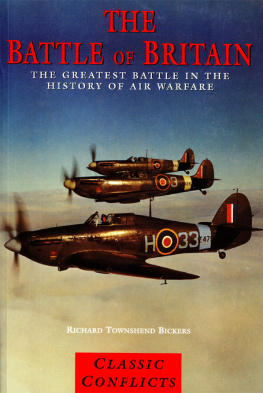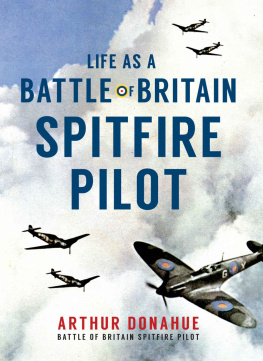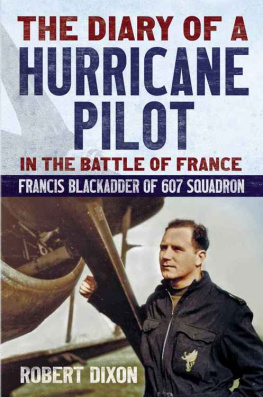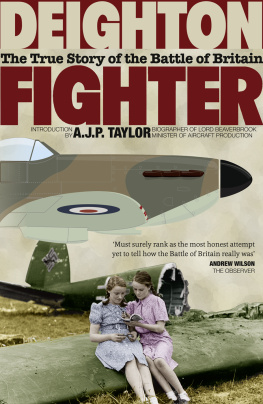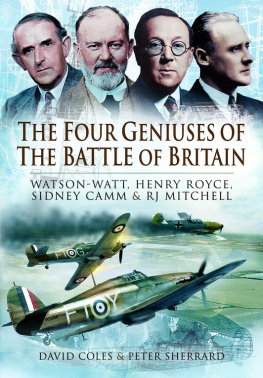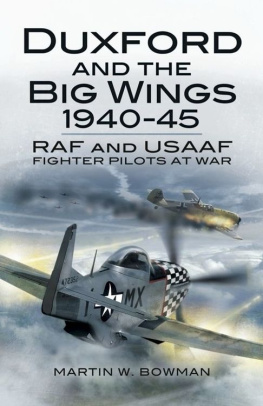First published in 2020 by
Merrion Press
10 Georges Street
Newbridge
Co. Kildare
Ireland
www.merrionpress.ie
Dan Harvey, 2020
9781785373251 (Paper)
9781785373268 (Kindle)
9781785373275 (Epub)
A CIP catalogue record for this book is
available from the British Library.
All rights reserved. No part of this publication may be reproduced, stored in a retrieval system, or transmitted, in any form or by any means (electronic, mechanical, photocopying, recording or otherwise) without the prior written permission of both the copyright owner and the publisher of this book.
Front cover: Battle of Britain. Czech Hurricane pilots in 1940 at their squadrons UK base Pictorial Press Ltd / Alamy Stock Photo.
Back cover: RAF Hawker Hurricanes making a head-on attack against German Luftwaffe Messerschmitt Bf 110s in the Battle of Britain Gary Eason / Flight Artworks / Alamy Stock Photo.
FOREWORD
Growing up, one of the first movies that my father brought me to see was 633 Squadron an action air picture based on events during the Second World War and featuring the ubiquitous DH Mosquito aircraft, the Wooden Wonder. This outstanding picture and iconic aircraft caught my attention and I commenced building AirFix models as fast as they and I could make them. Along the way I assembled a sample of the Supermarine Spitfire, featuring in another film Angels 15 , as well as Reach for the Sky and many more. Around the end of the Sixties the film Battle of Britain was released and I splashed out on a massive 1/48th scale model to celebrate. My mother asked me what I was building and I said Id give her a hint, saying RJ Mitchell. Oh, she replied, a Spitfire! I was stunned and impressed! But I learnt then that my parents had lived through the war and blitz in Belfast and were well aware of the origins and importance of Mitchells creation.
They moved to Dublin after the war and I grew up in a community in Malahide comprising an amazing amount of former Second World War ex-RAF pilots flying with Aer Lingus. Jock Smith had flown Consolidated Liberator bombers in the Far East theatre of operations and Roy Smith flew Lancaster bombers on missions over Europe and had a wonderful photograph on the wall in his hallway of his squadron personnel posing in front of a Lancaster bomber. Ian Dunlop was a fighter pilot who flew in the Battle of Britain and met his future wife between scrambles during the battle as she was a WAAF technician and involved in servicing on his aircraft! After the battle, he served in the Aircraft and Armament Experimental Establishment at Boscombe Down where he test-flew every Allied fighter type including P-51s, P-47s, and P-38s, as well as the RAF types like Typhoons and all the Spitfire marks, assessing them for combat performance and handling qualities.
During my service in the Air Corps I became aware that they had operated a squadron of Supermarine Seafire LF. IIIs Mk.47s and then replaced them in the early Fifties with six, two-seat conversion, Spitfire T. Mk.9s. Long since gone before my entry to the Flying School there were reports that they had been sold to the Battle of Britain film company and that some were still airworthy in the UK in private hands. In 1986 one returned to Casement Aerodrome in the ownership of Mr Nick Grace to display at that years Air Spectacular airshow. Sadly, Nick later died in a car crash but the aircraft has returned since to our skies, displayed by his wife Carolyn and son Richard. The sound of that Rolls Royce Merlin engine combined with its speed and the elegance of its wings made a big impression on me as a lowly Marchetti pilot!
Twenty years on and another ex-Air Corps Spitfire, formerly serial number 161, graced our skies once again to attend a Wings Day, sponsored this time by the airline CityJet. It was and remains in the ownership of John Romain of the Historic Aircraft Restoration Company based in the former RAF base Duxford and its appearance and aerobatic display at the end of the parade was both inspirational and impressive. After landing it formed a stunning backdrop for the photographs of the graduating class, dominating the apron with its mighty propeller while the engine clicked and ticked as it cooled off.
A couple of weeks later I was fortunate to fly in her back to Duxford, helping John navigate through and out of Irish Airspace and being allowed to hand fly her all the way to our destination where he then put on a spirited aerobatics display before landing. I sat in the back, a passenger, and experienced the sheer power and manoeuvrability of that aircraft and was enthralled by its noise and performance. I have heard the cockpit noise of a Spitfire likened to driving around inside the China Showrooms at full power in a JCB and I must admit it comes close to fitting the bill. On parking we were met by the aircrafts technical team, who gave her a thorough and loving examination, confessing as they did, that they had missed her in their hangar. Such is the magic and magnetism of a Spitfire.
I flew an ex-Air Corps Spitfire once more in my career Nick Graces machine, piloted by his son Richard. Strapped into that small but comfortable cockpit, its an aircraft that you wear when the straps are tightened. He gave me control to get a feel for her and the response took me by surprise. We both blacked out on my first attempt at a loop! In fairness, Richard did warn me about that element of Spitfire control sensitivity before we took-off and from then on I explored with a little more caution the full flight spectrum and enjoyed about fifteen minutes of basic aerobatics over County Kildare in his company.
The seventieth anniversary of the Battle of Britain came around in 2010 and into the Office of the GOC Air Corps arrived an invitation from the Chief of the Air Staff of the RAF to attend the laying up of the Fighter Command colours in Westminster Cathedral. Times had moved on; the veterans were not getting any younger and parading to the cathedral was becoming impossible for many of them as they approached their nineties. This event was to mark the end of their Battle parades and my presence was to represent the many Irishmen from the Republic who had fought in the Battle thirteen in all, I was informed. Allocated a seat in the Poets Corner, along with a large cohort of military attachs and European Air Chiefs, I watched as the veterans were arranged opposite us, some in wheelchairs. There before me were the surviving pilots, technicians, armourers, radar operators, sector fighter controllers and group headquarters staffs who had actually fought the battle. These were the very people who wouldnt give up, ever, never, no matter what the odds in 1940, when all of Europe had been suborned by the mighty and apparently invincible military forces of the Third Reich. Medals adorned every chest and they carried themselves with an air of defiance, or stubbornness, or arrogance, or perhaps all three.
The Fighter Command colours were carried into the cathedral by Geoffrey Wellum, author of the classic Battle of Britain fighter pilots memoir First Light and one of the youngest pilots involved in the Battle. Now he was one of The Few capable of carrying the weight of their colours and he proudly led the parade past assembled serving and former prime ministers, senior military officers and guests, to hand them over to Prince Charles, parading that day in his RAF uniform. It was an honour to be invited to attend and experience such a moving finale to the Battle and see at first hand those who had been there, done that.


